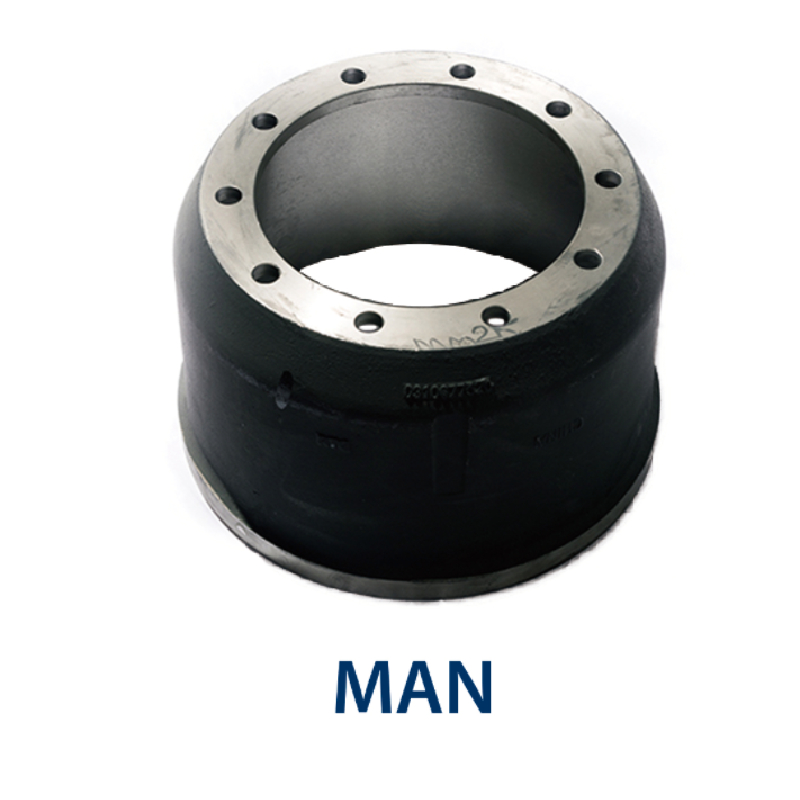Jul . 31, 2024 12:21 Back to list
Recommended Minimum Thickness for Brake Drums to Ensure Safety and Optimal Performance
Understanding Minimum Brake Drum Thickness A Key to Vehicle Safety
Maintaining a vehicle's braking system is crucial for ensuring safety on the road. One vital aspect of this maintenance involves the brake drum, a key component in drum brake systems commonly found in many vehicles. Understanding minimum brake drum thickness is essential not only for optimal vehicle performance but also for the safety of the driver, passengers, and other road users.
Brake drums undergo significant wear and tear due to the friction generated when the brake shoes come into contact with them. Over time, this wear can cause the drum to become thinner, leading to a range of issues, including reduced braking efficiency, increased stopping distances, and, ultimately, potential brake failure.
The Importance of Minimum Thickness
The term minimum brake drum thickness refers to the lowest thickness that a brake drum can maintain while still functioning effectively. This specification is crucial because it signifies the point at which the drum can no longer dissipate heat or withstand the pressure generated during braking. When the drum wears down to its minimum thickness, it can warp, crack, or even shatter, leading to catastrophic brake failure.
Manufacturers typically provide specific minimum thickness measurements in the vehicle's service manual or on the brake drum itself. It's important for vehicle owners and mechanics to refer to these specifications during regular maintenance checks.
Determining Minimum Thickness
To determine if a brake drum has reached its minimum thickness, technicians often use a process called measuring with a micrometer or caliper. This evaluation should be part of routine brake inspections, particularly during brake pad replacements. Technicians may also look for signs of damage, such as scoring or grooves in the drum surface, which can indicate excessive wear.
minimum brake drum thickness

Signs of Worn Brake Drums
In addition to measuring thickness, being aware of symptoms of worn brake drums is critical. Some common indicators include
1. Vibration During Braking If the vehicle shakes when the brakes are applied, it might be a sign that the brake drums are warped or unevenly worn. 2. Noisy Braking Squeaking or grinding noises can indicate that the brake shoes are worn down to the point where they are damaging the drum.
3. Reduced Braking Power If the vehicle takes longer to stop than usual, it could mean that the brake drums are not providing adequate friction.
4. Visible Damage Any cracks, deep grooves, or significant discoloration on the surface of the drum should not be ignored and warrant immediate inspection.
Conclusion
Understanding the importance of minimum brake drum thickness is vital for any vehicle owner who prioritizes safety. Regular maintenance checks, including measuring the brake drum thickness, can help prevent accidents caused by brake failure. Always refer to the manufacturer's specifications and seek professional assistance if any signs of wear or damage are observed.
By keeping an eye on brake drum conditions and adhering to recommended maintenance schedules, vehicle owners can ensure their braking systems function effectively, providing reliable stopping power when it's needed the most. In the end, taking the time to understand and act upon the minimum brake drum thickness can be the difference between safe driving and potential disaster on the road.
-
ROR Web Development: Build Fast, Scalable, Secure Apps
NewsAug.17,2025
-
Scania Brake Drums: OEM Quality for Optimal Safety & Durability
NewsAug.16,2025
-
R.V.I: Advanced Remote Visual Inspection for Precision
NewsAug.15,2025
-
Discover HYUNDA: Innovative Vehicles, Equipment & Solutions
NewsAug.14,2025
-
R.V.I: Unlock Advanced Insights & Real-time Performance
NewsAug.13,2025
-
Kamaz Brake Drum: Durable & Reliable for Heavy Duty Trucks
NewsAug.12,2025
